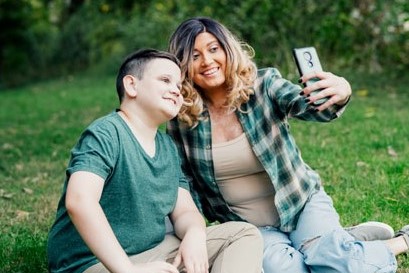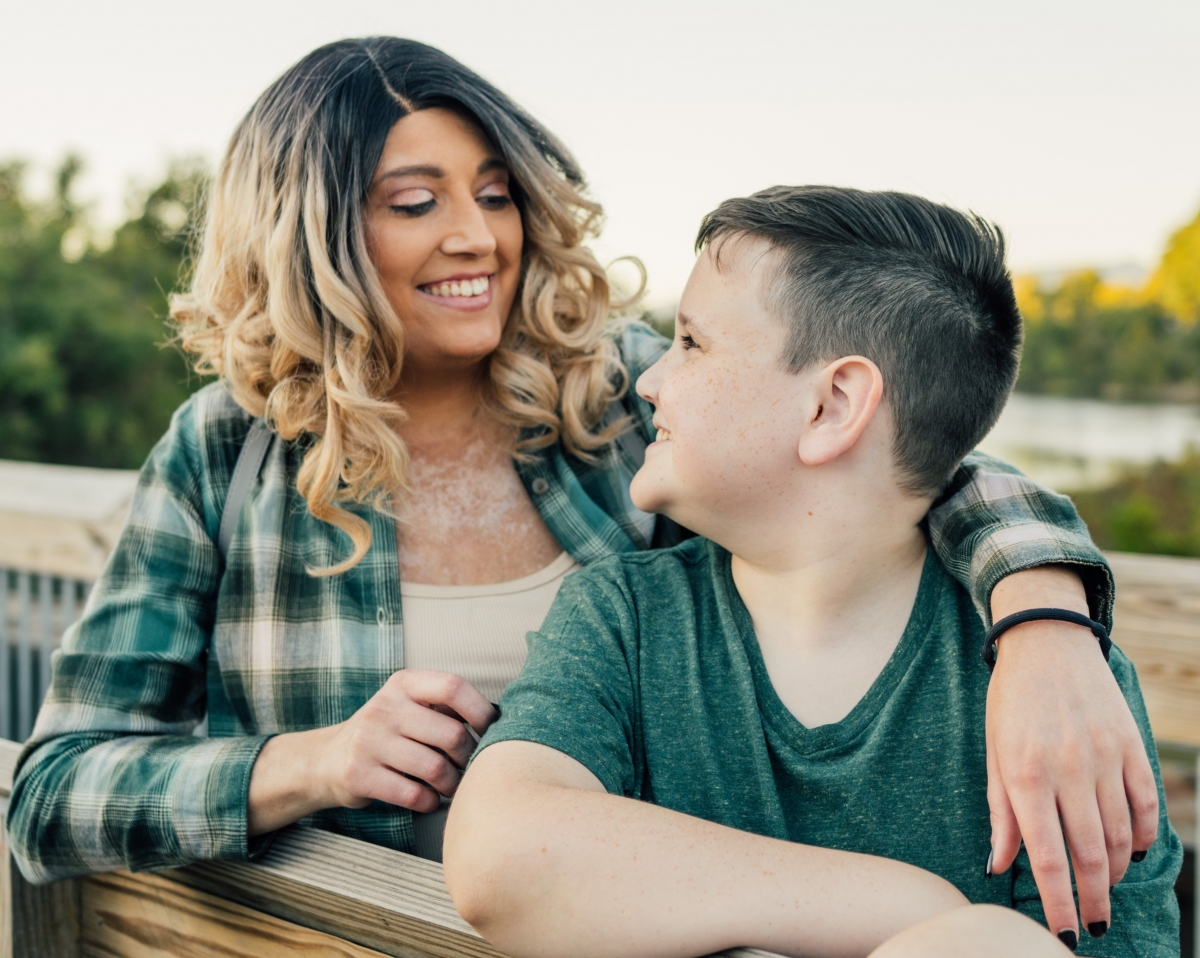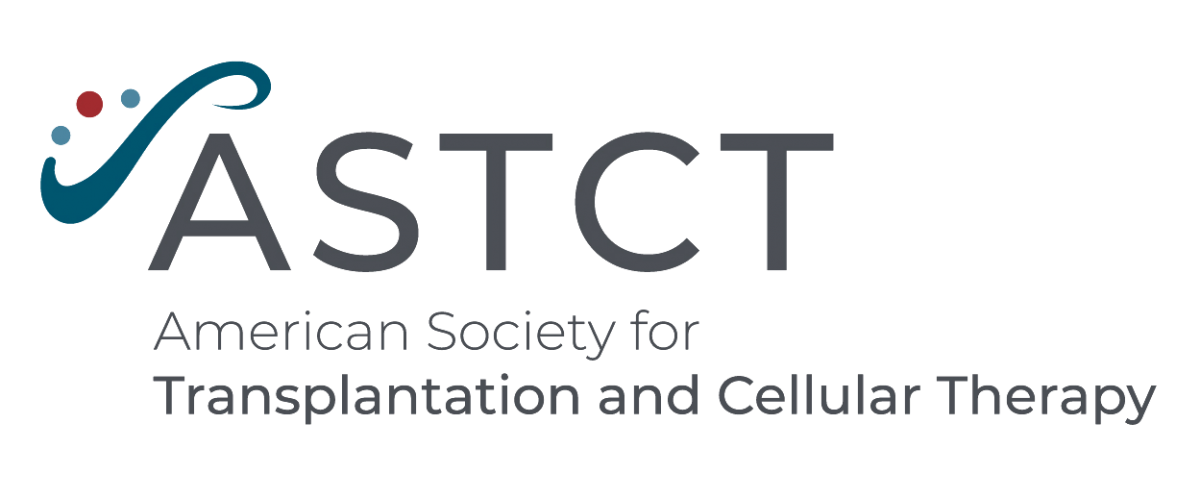Tabatha Temple
Not many people could experience what Tabatha Temple has been through over the last nine years and still, at the end of the day, be visibly excited about a milkshake. But that’s Tabatha: indomitably optimistic.
On the afternoon in 2013 when she first learned she had acute myeloid leukemia (AML), Tabatha went home and cooked a giant spaghetti dinner for the many family members who’d assembled to comfort her. As she put it, “My son and all the little cousins had to eat!”
 That kind of positive momentum has carried this devoted mother, and native North Carolinian, through tremendous challenges, with her sense of humor and playful nature fully intact. As she describes, “I will make jokes about everything. I make ALL the jokes.”
That kind of positive momentum has carried this devoted mother, and native North Carolinian, through tremendous challenges, with her sense of humor and playful nature fully intact. As she describes, “I will make jokes about everything. I make ALL the jokes.”
That playfulness includes recognizing the unexpected absurdities of medical life, “In my chart there’s a bunch of really weird things that have nothing to do with cancer. For instance, I’ve been bitten by a squirrel and by a big ball python named Mellie.”
There are also, of course, much more serious aspects to Tabatha’s medical history. After her original diagnosis, she enjoyed a brief remission, only to relapse twice before her doctors at Duke University Hospital in Durham, NC advised a bone marrow transplant in December of 2014. 
While Tabatha is now doing extremely well, “I see myself as healthy… going to the gym is a must,” she endured an arduous period of recovery including multiple bouts of graft-versus-host disease (GVHD). As Tabatha says, “I’ve had GVHD pretty much everywhere you can have it. First my gut. Currently it’s in my eyes and on my skin.”
Because of the high dose steroids required to combat GVHD, Tabatha’s bones are exceptionally fragile. “I broke my foot, my hip and my wrist,” says Tabatha. “I’ve had more broken bones as an adult, than as a kid!”
As painful as some parts of her recovery have been, the emotional challenges of mothering a young son while physically fragile were even tougher. “I missed a lot of Dylan’s time being little because I was sick,” Tabatha says.
Now, she makes up for lost time by volunteering in his classroom multiple times a week and planning a continuous stream of fun family outings. Tabatha lit up while describing a recent fun-jammed afternoon with her sister. “Yesterday we took them (Dylan and his younger cousin PJ) to the arcade, and then the trampoline park, and then we got huge milkshakes!”
 Beyond treasuring everyday pleasures, like milkshakes, Tabatha also finds silver linings in some of the “losses” of transplant, like not being able to work. In her view, “There’s a blessing in everything. Being able to be in Dylan’s classroom is a blessing, so in that way, not working is a blessing. Sometimes you have to look really hard, but the blessing is always there.”
Beyond treasuring everyday pleasures, like milkshakes, Tabatha also finds silver linings in some of the “losses” of transplant, like not being able to work. In her view, “There’s a blessing in everything. Being able to be in Dylan’s classroom is a blessing, so in that way, not working is a blessing. Sometimes you have to look really hard, but the blessing is always there.”
Tabatha recalls a memory of phoning her father at work on the day she first heard she was sick. “He said ‘Baby girl, I’m not trying to belittle your situation, but our God is bigger than this.’” Tabatha continues, “And, I kid you not," says Tabatha. "The biggest wave of peace washed over me; I felt calm. I was good.”

A leading center of clinical care, medical education, and biomedical research, Duke University Hospital is consistently ranked among the nation’s premier health care institutions. Patients directly benefit from Duke’s leadership in cancer research, thanks to a “bench to bedside” approach that focuses on making promising new therapies quickly available to those who need them most. Under the leadership of Nelson Chao, MD, Duke has earned national and global recognition for its innovations in blood and marrow transplantation.

The American Society for Transplantation and Cellular Therapy (ASTCT), formerly known as the American Society for Blood and Marrow Transplantation, is a professional society of more than 2,200 healthcare professionals and scientists from over 45 countries who are dedicated to improving the application and success of blood and marrow transplantation and related cellular therapies. ASTCT strives to be the leading organization promoting research, education, and clinical practice to deliver the best, comprehensive patient care.
Photo credit: Roger Erdvig, Lynchburg, VA erdvigvisuals.com